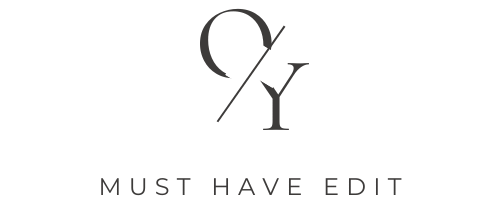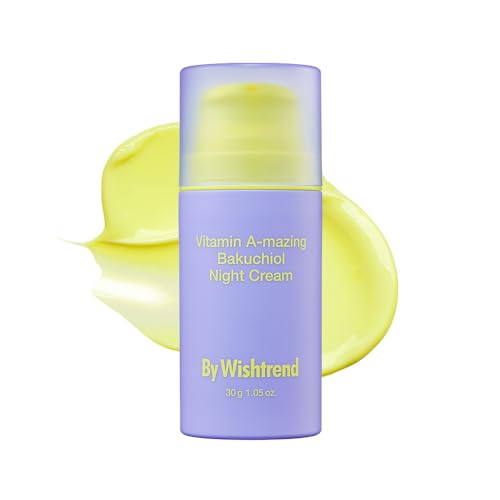How This Retinol Vitamin A Superstar Transforms Your Skin
Did you know that over 70% of dermatologists prescribe retinoids weekly? If you spend even five minutes in the skincare aisle or scrolling through beauty TikTok, chances are you’ve seen the word retinol pop up. Some people call it a miracle worker, while others are nervous to even try it. It’s normal to feel apprehensive about starting a new skincare product, especially one as potent as retinol. So, what exactly is it? And does it really work?
Let us break it down in a simple, friendly way, because skincare should not feel like a science lecture.
Disclaimer: This post contains affiliate links. We may earn a small commission when you make a purchase through the links above at no additional cost to you. See my disclosure for more info.
What Retinol Actually Is
Retinol is part of the Vitamin A family, and your skin basically treats it like fuel. You do not eat it; you apply it directly to your skin. You’ll see it packaged as a cream, a serum, or even a gel.
There are gentle versions you can buy at the store, and then there are stronger, prescription-only ones your dermatologist can give you if you need something more powerful. Either way, retinol has one main job: to convince your skin cells to act young again.
Why So Many People Swear by Retinol
Here is the cool part. Retinol speeds up how your skin renews itself. That means:
- Pores don’t stay clogged.
- Dull, dead skin sheds faster.
- Collagen gets a nice boost.
And collagen, if you are wondering, is what keeps your skin firm, plump, and bouncy. When we get older, we naturally lose collagen; retinol helps press the pause button on that. The end result is skin that looks clearer, smoother, and fresher.
The Waiting Game (And the “Purge”)
Now, do not expect to wake up glowing after one night. Retinol is not a magic wand. It starts working in your skin right away, but it usually takes weeks before you see the results in the mirror.
And here is the tricky part: your skin may even look worse before it gets better. You might break out more or feel dry and flaky. People call this the retinol purge, and while it can be annoying, it is actually a sign that your skin is adjusting. Stick it out, and things usually smooth out beautifully.
Skin Concerns Retinol Can Help With
One of the best things about retinol is that it is not just for one skin issue. It’s like a multitasker that tackles a bunch of concerns at once.
- Acne: Retinol keeps your pores unclogged, which means fewer pimples in the long run.
- Scars: It can fade leftover marks from acne, though deep scars may need more than just retinol.
- Dark spots: Sun damage or age spots? Retinol can slowly lighten them.
- Large pores: By boosting cell turnover it makes them look smaller.
- Melasma: Those patchy brown spots some people get, retinol can help fade them.
- Psoriasis: It slows down the crazy-fast skin cell growth, helping calm flare-ups.
- Stretch marks: Over time, they can make them look less noticeable.
- Wrinkles and fine lines: This is the big one; retinol helps prevent collagen from breaking down, keeping your skin smoother and firmer.
Pretty impressive, right?
Who Should (and Shouldn’t) Use Retinol
Retinol is powerful, but it is not for everyone. If you have very sensitive skin or you are pregnant, it might not be the best choice. Also, retinol makes your skin more sensitive to the sun, so if you are using it, sunscreen is your new best friend.
For most people, though, retinol is safe as long as you introduce it slowly. Think of it like training for a marathon, you would not run 10 miles on your first day. Start with just a little, a few times a week, and then increase as your skin adjusts. To help you ease into it, here’s a simple starter schedule:
- Week 1: Apply retinol once.
- Week 2: Use it twice, but with a day or two in between applications.
- Week 3: If your skin is feeling comfortable, try using it every other day.
Patience and gradual introduction are key to letting your skin adapt without causing irritation.
Common Side Effects (And How to Deal with Them)
When you first add retinol to your routine, you might notice some side effects like:
- Dryness
- Peeling
- Redness
- A little burning or itching
Do not freak out, this usually does not last forever. To make it easier on your skin, try following this Retinoid Night Routine:
- Only use one retinol product at a time.
- Try every other night instead of daily.
- Wait a bit after washing your face before applying.
- Pair it with a good moisturizer.
- Never skip sunscreen in the morning.
With a little patience, your skin usually adapts.
Can Retinol Harm Your Skin?
Used the wrong way, yes. Too much retinol or skipping sunscreen can backfire and actually damage your skin. But when you follow the “start slow and protect” rule, retinol is one of the safest and most effective ingredients you can use. Dermatologists all over the world still recommend it for good reason.
My Personal Retinol Picks
Now, let us get to the fun part. If you are wondering where to even start, let me share how I moved from being a retinol beginner to trying different formulas. When picking a product, consider what makes it ‘beginner-friendly’: look for options with lower concentrations of retinol and those that include added soothing ingredients like glycerin or hyaluronic acid.
Here are three retinol products I have tried and genuinely recommend:
- Skin1004 Lab in Nature Madagascar Centella Retinol 0.2 Boosting Shot Ampoule. [ Use code ‘YVONKA09’ to get discount for this retinol and more ].
I like these because they balance effectiveness with minimal irritation. Of course, everyone’s skin is different, but these are great starting points.
Final Thoughts
Retinol is not just a trend; it is a skincare classic that has stood the test of time. It helps with acne, wrinkles, scars, dark spots, and so much more. The key is patience, consistency, and always protecting your skin with SPF.
Think of it like this: retinol is not giving you overnight magic, it’s giving your skin the long-term training it needs to stay healthy and youthful. And honestly? That’s better than any quick fix. So, what will your skin look like twelve weeks from today? Why not begin your journey and find out?
So if you have been curious, take the first step and try it with one of the recommended products. Your future self (and your skin) will thank you. Start your retinol journey today!
Quick note: I’m not a health practitioner or dermatologist. I’m just a skincare lover who enjoys learning, testing, and sharing what I find. Everything in this post comes from my own experience and research. While I share personal insights, dermatologists often recommend starting slowly with retinol and always using sunscreen to protect your skin. These practices are widely accepted and ensure the safe use of retinol. If you are thinking about adding retinol to your routine, especially if you have sensitive skin or medical concerns, it is always a good idea to check in with a licensed professional first.






